M2M SIM-Karte
Was ist eine Standard SIM-Karte?
Die M2M SIM-Karte ist das Herzstück des Mobilfunkgerätes.
Ohne Standard-SIM-Karte könnten wir nicht telefonieren, im Internet surfen oder auch nur Nachrichten schreiben. Die SIM-Karte von M2M-Allnet ist das Verbindungsstück zwischen Smartphone, Tablet, Smartwatch und dem Mobilfunkanbieter.
Nur so kann auf Netzdienste zugegriffen werden – natürlich auch mit vielen weiteren Geräten.
Damit die M2M SIM-Karte für alle Netze den gewünschten Funktionen und immer neueren Geräten gerecht wird, gibt es verschiedene Formate.
Weitere SIM-Karten-Formate von M2M-Allnet

Industrie-Sim
Stay actionable everywhere and connect all industrial machines worldwide with M2M Allnet
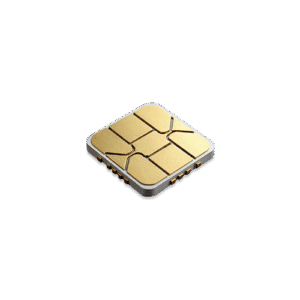
eSIM
Der Nachfolger der klassischen SIM-Karte wird für Sie fest ins Endgerät eingebaut. Mit allen bekannten Vorteilen!
Sie interessieren sich für eine SIM, wissen aber nicht welche? Wir helfen gerne!
Der passende Tarif von
M2M-Allnet zur
Standard-Sim
M2M Allnet rate calculator
Standard-SIM-Karte für IoT-Geräte – das sind Ihre Vorteile
- Transparent tariff, der flexibel gestaltbar ist
- Fast data connection LTE/5G
- Favorable prices
- SIM-Management independent of the provider
- IOT-Management
- Persönliche Beratung
- Flexible Vertragslaufzeit – angepasst an Sie
M2M SIM-Karten wechseln – das sollten Sie beachten
Standard SIM-Karten von M2M-Allnet sind Produkte, die mit der Zeit verschleißen und keine unbegrenzte Lebensdauer haben. Die Lebensdauer verringert sich jedes Mal, wenn sich die Karte neu im Mobilfunknetz anmeldet. Mit älteren SIM-Karten kann man sich laut Herstellern bis zu 100.000-mal im Netz anmelden, mit neueren M2M Karten sogar 500.000 bis eine Million Mal. Doch was ist zu beachten, wenn Sie eine neue SIM-Karte von M2M-Allnet in Ihr Gerät einsetzen wollen? Hier ein paar Tipps:
Grundlegendes zur M2M Standard-SIM-Karte
Beim Wechsel der Standard-SIM-Karte werden Daten wie Kontakte und Fotos nicht automatisch übernommen. Das ist nur möglich, sofern die Karte als Speicherort vorher hinterlegt wurde.
Daten vor dem Tausch der M2M SIM-Karte sichern
Aus diesem Grund sollte vor dem Wechsel der M2M SIM-Karte eine Datensicherung vorgenommen werden. Hierfür gibt es verschiedene Möglichkeiten. Entweder Sie speichern die Daten über ein Backup digital in einer Cloud, oder Sie nehmen eine portable Festplatte zum Übertragen der gewünschten Daten. Einige Smartphone Modelle bieten sogar eine drahtlose Übertragung der Informationen an, sofern der Hersteller nicht gewechselt wird. Auf dem Markt sind auch zahlreiche Apps zur Datensicherung zu finden. Aber Achtung: Auch hier werden Daten, sofern nicht anders definiert, nur auf dem Telefon gespeichert. Da bei der Übertragung eine offene Stelle geschaffen wird, ist dies eine Schwachstelle für Missbrauch.
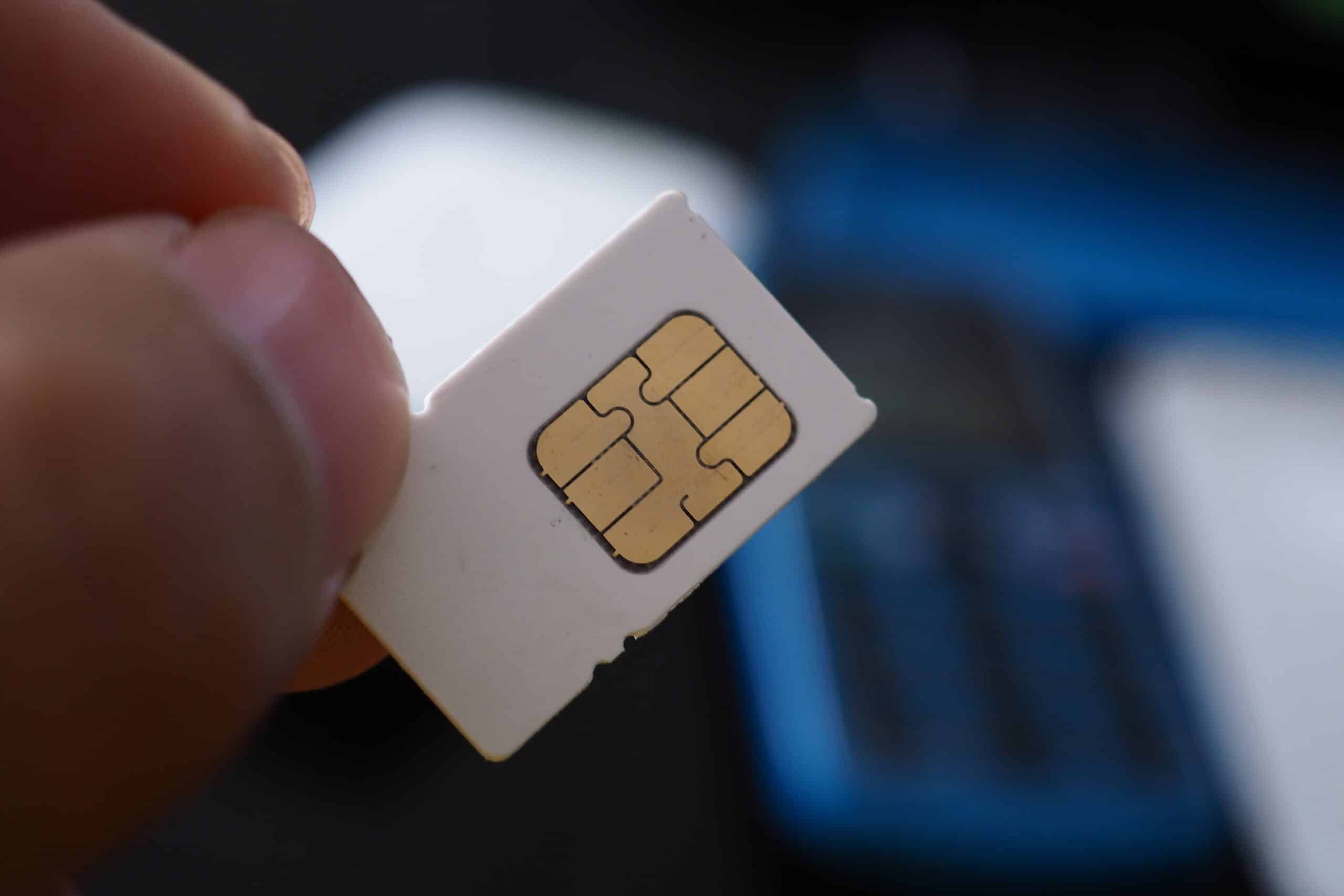
Das Thema Sicherheit scheint daher eine besonders große Herausforderung für den Bereich IoT (Internet der Dinge IoT) und wird sich in Zukunft noch weitreichend entwickeln. Forschung und Entwicklung arbeiten kontinuierlich daran, Sicherheitslücken aufzudecken und Lösungen zur Schließung derer zu schaffen. Doch die Hürde ist hoch. Schnelllebigkeit und ein steigendes Maß an Cyber-Kriminalität lassen die Ansprüche wachsen.
In wenigen Schritten zum Ziel: M2M SIM-Karte wechseln
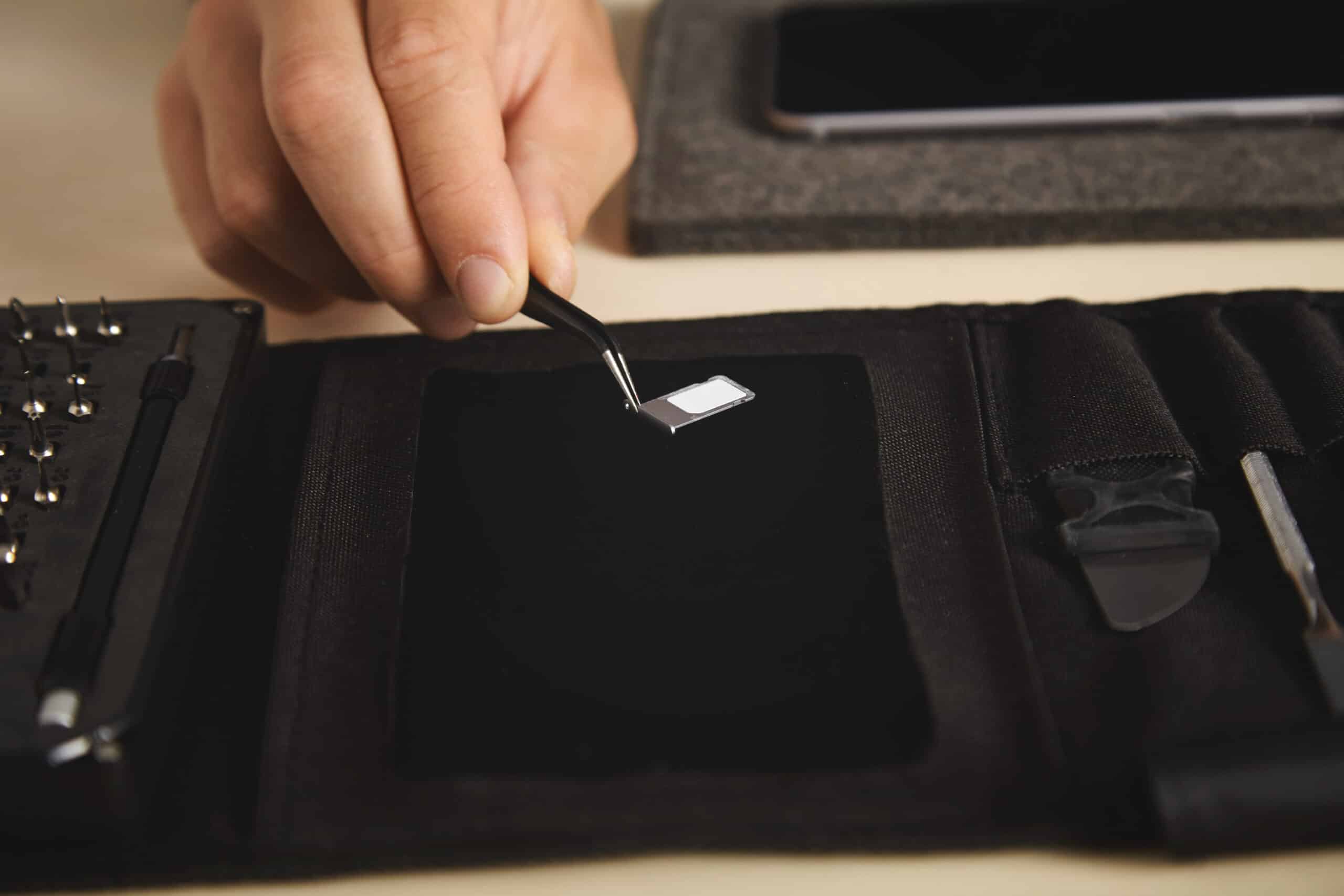
1. M2M Standard-SIM-Karte beim Smartphone mit abnehmbarer Rückseite wechseln
Zuerst muss das Gerät ausgeschaltet und das Gehäuse entfernt werden. Nun haben Sie Sicht auf das Innenleben – SIM-Karten befinden sich meist unter dem Akku. Um sie wechseln zu können, muss also der Akku herausgenommen werden.
2. SIM-Karte in einem IoT-Modell mit Kartenslot einsetzen
IoT SIM-Karten können in der Größe variieren. Deswegen sollten Sie sich im Vorfeld erkundigen, welches SIM-Karten-Format für Sie in Frage kommt. Auch hier ist es wichtig, das Gerät erst einmal auszuschalten und den Akku zu entfernen. Stecken Sie anschließend die Standard-SIM-Karte an den vorgesehenen Platz, setzen Sie den Akku wieder ein und schalten Sie das Gerät an.
Ist Ihnen der Prozess zu riskant oder klingt zu kompliziert, können Sie jederzeit einen Fachmann aufsuchen. SIM-Karten werden häufig direkt vor Ort gewechselt, was meist nur wenige Euro kostet.
M2M SIM-Karten-Kompatibilität
Im Prinzip können Sie heutzutage jede SIM-Karte für jedes Gerät verwenden. Die so gut wie nicht mehr genutzten Standard-SIM-Karten bieten die Möglichkeit, dank entsprechender Stanzung die passende Mini-SIM herauszutrennen. Mit einer Schablone lässt sich aus einer Mini-SIM eine Micro-SIM zuschneiden, genauso wie Sie aus einer Micro-SIM eine Nano-SIM machen können. Von den acht Kontaktflächen des eigentlichen Chips sind zwei lediglich Reserve und somit ohne Funktion, daher ist ein Zuschnitt relativ einfach.
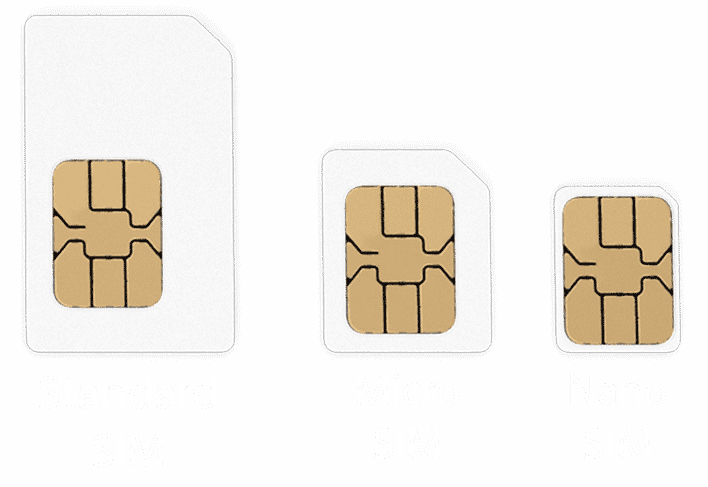
Was tun, wenn das Format zu groß ist? Haben Sie bisher ein Handy mit einer Standard-SIM genutzt und steigen auf ein neueres Modell um? In dem Fall brauchen Sie eine kleinere Größe der SIM-Karte, die Sie zuschneiden lassen können. Wichtig ist dabei, darauf zu achten, dass der Chip nicht beschädigt wird. Herausstanzen ist hierbei eine bessere Möglichkeit. Dazu können Sie entsprechendes Werkzeug kaufen oder in einen Handyshop gehen.
Sie benötigen eine Sim-Karte? Wir von M2M-Allnet haben das passende Produkt für Sie!
SIM-Karten-Adapter:
Die passende Hardware
You have a nano or micro SIM and want to put it in a mobile phone that is only suitable for larger card formats? Then simply use an adapter. You can usually buy these in sets of different sizes.
Suchen Sie die passende Größe heraus und legen Sie Ihre M2M SIM-Karte hinein. Achten Sie darauf, dass diese möglichst fest im Adapter sitzt. So kann sie nicht herumrutschen oder sogar herausfallen.
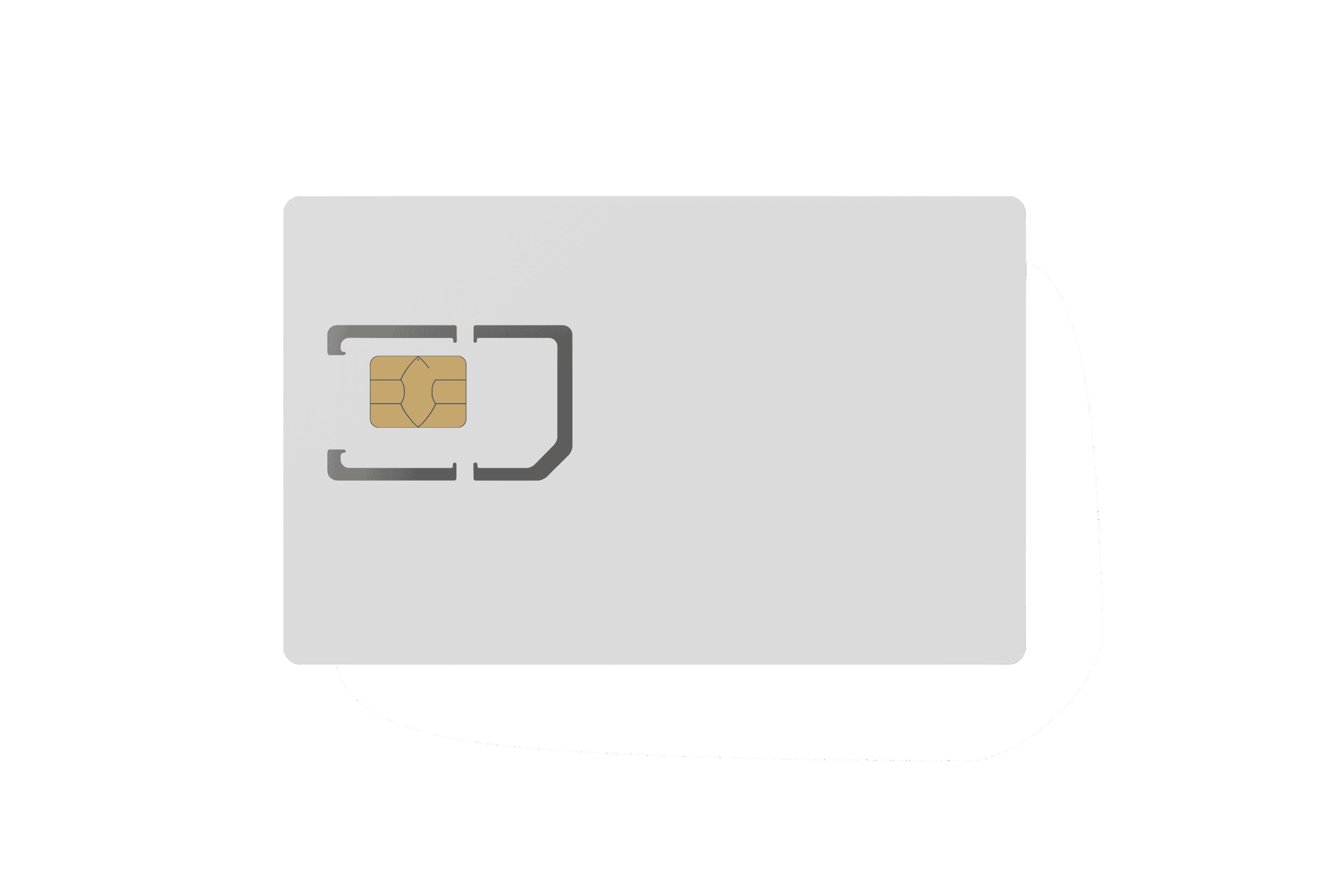
TIPP: Benötigen Sie ein anderes SIM-Karten-Format, können Sie dies bestellen. Sie erhalten die passende M2M SIM-Karte innerhalb weniger Tage. Sollten Sie keine SIM mehr wollen – oder Sie können in Ihrem Gerät partout das Gehäuse nicht mehr öffnen – könnte es sein, dass Ihre Hardware bereits mit einer eSIM versehen ist. Was das ist? Die neueste Generation von M2M SIM-Karten. Mehr darüber erfahren Sie im Folgenden.
Der Nachfolger der Standard-SIM-Karte:
Die eSIM
Dieses innovative SIM-Karten-Format macht Ihren mobilen Alltag bequemer und eröffnet neue Möglichkeiten. Über die eSIM können Sie Ihre Smartwatch auch ohne Ihr Smartphone nutzen. Lassen Sie es zu Hause, wenn Sie unterwegs telefonieren, E-Mails abrufen oder im Internet surfen möchten. Das und mehr ganz einfach über Ihre Smartwatch – dank des neuen M2M SIM-Karten-Formats.
The eSIM as evolution
Bislang war der Karten-Standard eine externe Lösung, die Sie selbst in Ihr Mobilgerät einsetzen. Doch der technische Fortschritt sorgt für eine innovative Variante: die eSIM-Karte.
Bei ihr handelt es sich um ein besonderes SIM-Karten-Format. Dieses ist bereits in Smartphones, Smartwatches und Tablets fest integriert und muss beim Anbieterwechsel nicht ausgetauscht werden – so wird die Problematik mit den unterschiedlichen SIM-Karten-Formaten auf komfortable Weise gelöst.
Die „embedded SIM“ ist im Geräteinneren verbaut und lässt sich von außen mit Daten bespielen. Auf diese Weise gelangen die wichtigsten Informationen Ihres M2M-Tarifs auf Ihr Gerät. Wechseln Sie den Tarif oder Anbieter, werden die bisherigen Daten gelöscht und die neuen Daten werden direkt auf Ihre eSIM gespielt. Dies funktioniert kinderleicht über ein Zugangsprofil und einen Aktivierungscode. Ziehen Sie aber dennoch die altbekannte M2M SIM-Karte der eSIM vor, können Sie weiterhin auf diese Variante setzen und mobil unterwegs sein, sofern das Gerät für die altbekannten Karten geeignet ist.






